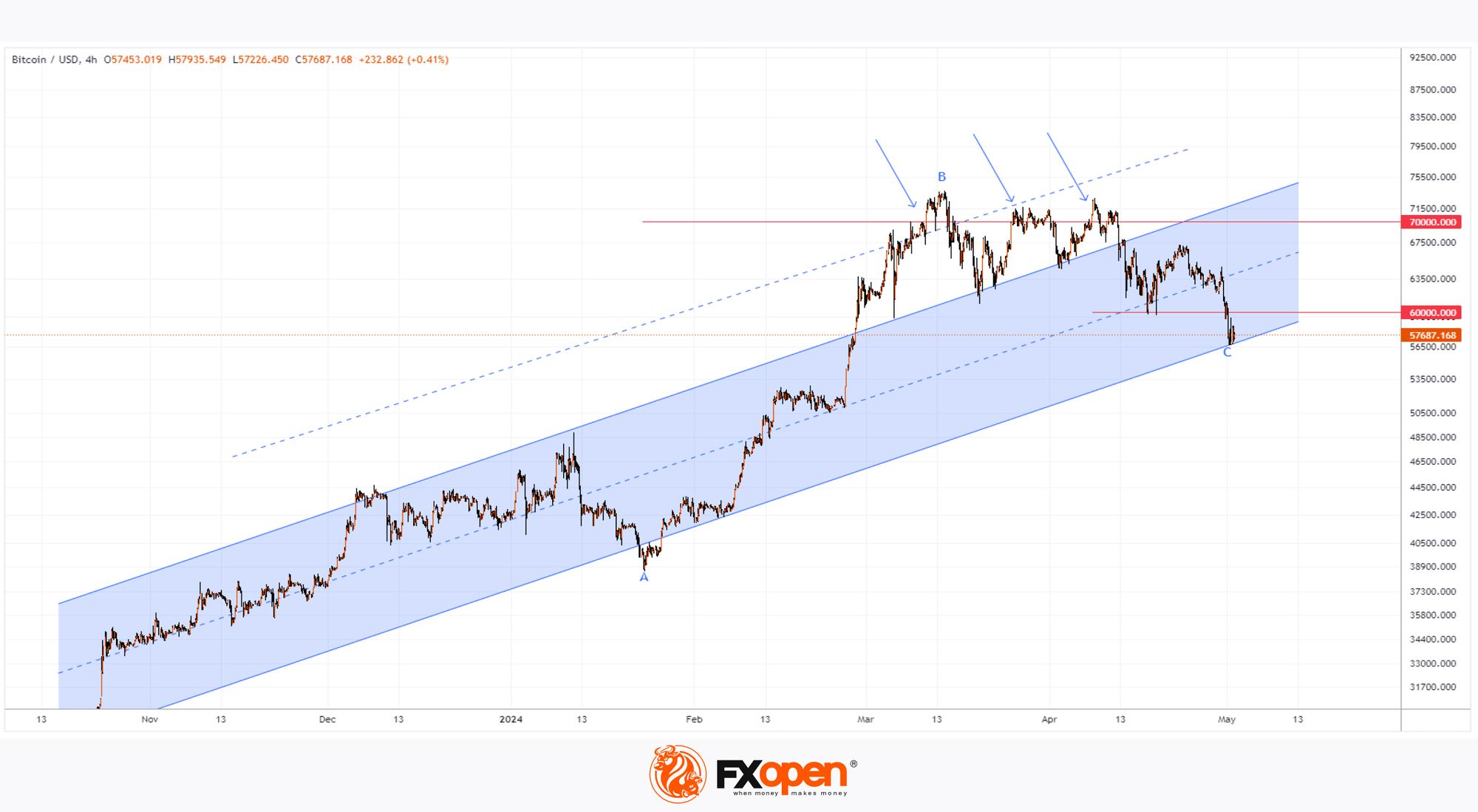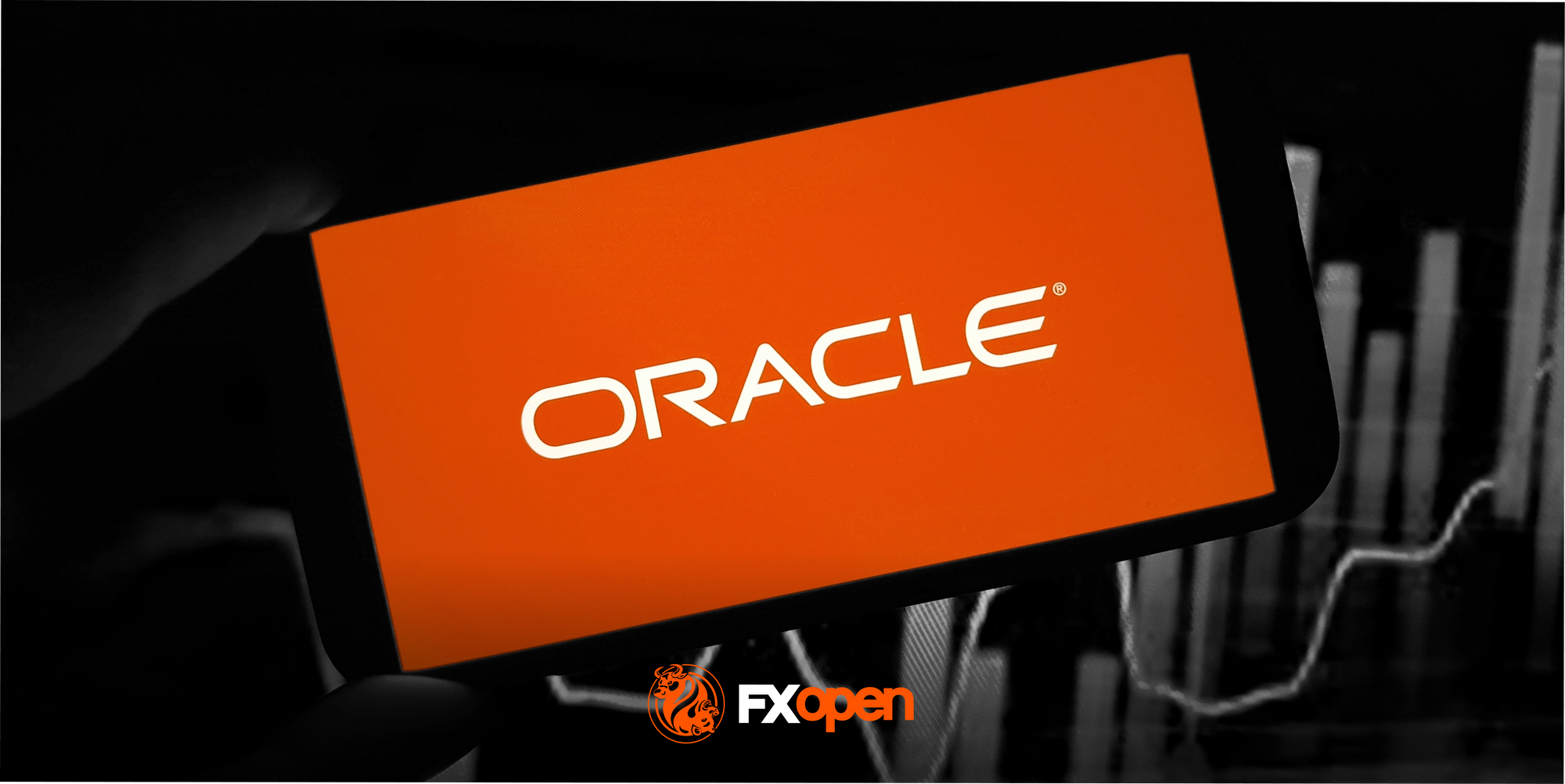FXOpen

In November 2022, the BTC/USD price dropped by 16.20%. The main driver of this decline was the crash of the FTX exchange.
In April 2024, the price of Bitcoin decreased by 14.77%. Paradoxically, the main news event could be considered the halving, which occurs every 4 years and is considered a bullish factor as it signifies a reduction in supply from miners. So why did the BTC/USD price decrease by the end of April?
Presumably, expectations from the halving could have been excessively optimistic, and after the event occurred, the price declined as emotions subsided – an example of "buy the rumour, sell the fact" situation.
It's worth noting that in the Bitcoin Cash network (a fork of the Bitcoin blockchain from August 2017), the halving took place on April 4, and the BCH/USD price decreased after that day – which could have been a concerning signal.

Regardless, technical analysis of the BTC/USD chart today presents a mixed picture.
Bullish arguments:
→ The BTC/USD price is still within an ascending channel that began in autumn 2023;
→ The lower boundary of the channel may provide support, especially as it intersects near point C, where the 50% correction level from the growth impulse A→B is located.
Bearish arguments:
→ The Bitcoin price attempted to surpass the psychological level at $70,000 three times (as indicated by the arrows) but unsuccessfully;
→ The BTC/USD price dropped into the lower half of the ascending channel, breaking below the median line;
→ The price fell below the psychological level of $60,000.
From a fundamental perspective, the situation is very concerning: the Bitcoin price is declining despite the launch of the Bitcoin ETF in January 2024 and the halving in April 2024. If the market does not find reasons for optimism, we may see an attempt to break below the lower boundary of the ascending blue channel in the near future.
FXOpen offers the world's most popular cryptocurrency CFDs*, including Bitcoin and Ethereum. Floating spreads, 1:2 leverage — at your service. Open your trading account now or learn more about crypto CFD trading with FXOpen.
*Important: At FXOpen UK, Cryptocurrency trading via CFDs is only available to our Professional clients. They are not available for trading by Retail clients. To find out more information about how this may affect you, please get in touch with our team.
This article represents the opinion of the Companies operating under the FXOpen brand only. It is not to be construed as an offer, solicitation, or recommendation with respect to products and services provided by the Companies operating under the FXOpen brand, nor is it to be considered financial advice.
Stay ahead of the market!
Subscribe now to our mailing list and receive the latest market news and insights delivered directly to your inbox.








